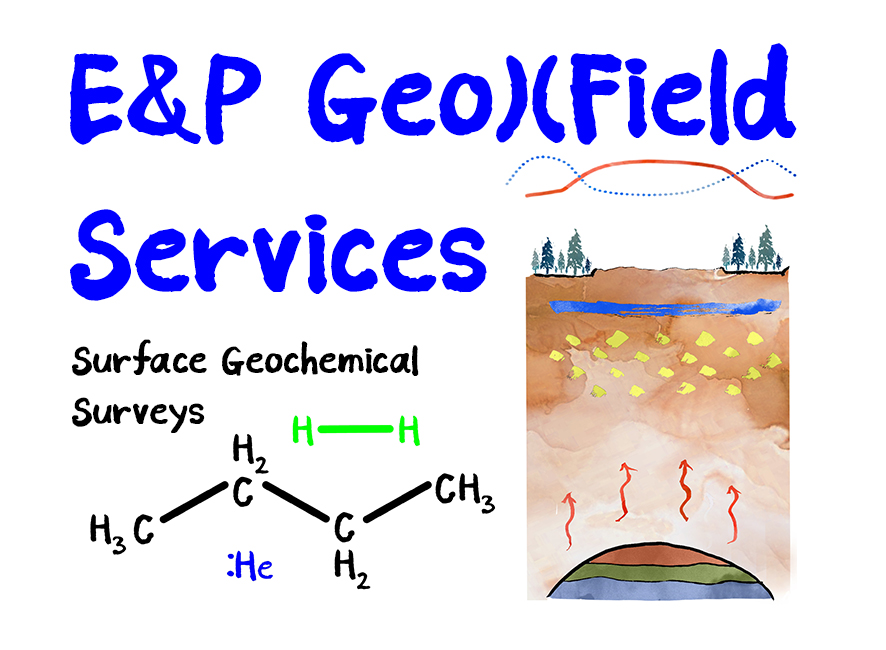Surface Geochemical Surveys for Hydrogen and Helium
Services
- Survey Design
- Analytical Program
- Fieldwork – Sampling
- Analytical Work through E&P GeoFS
- Analytical Interpretation and Reporting
Near-surface Hydrogen and Helium seepage occurs as microseepage and it is chemically detectable. Microseeping gases in the subsoil are part of the Interstitial gases or “soil gases”, those are gases and vapors that are present in the intergranular spaces of the subsoil.
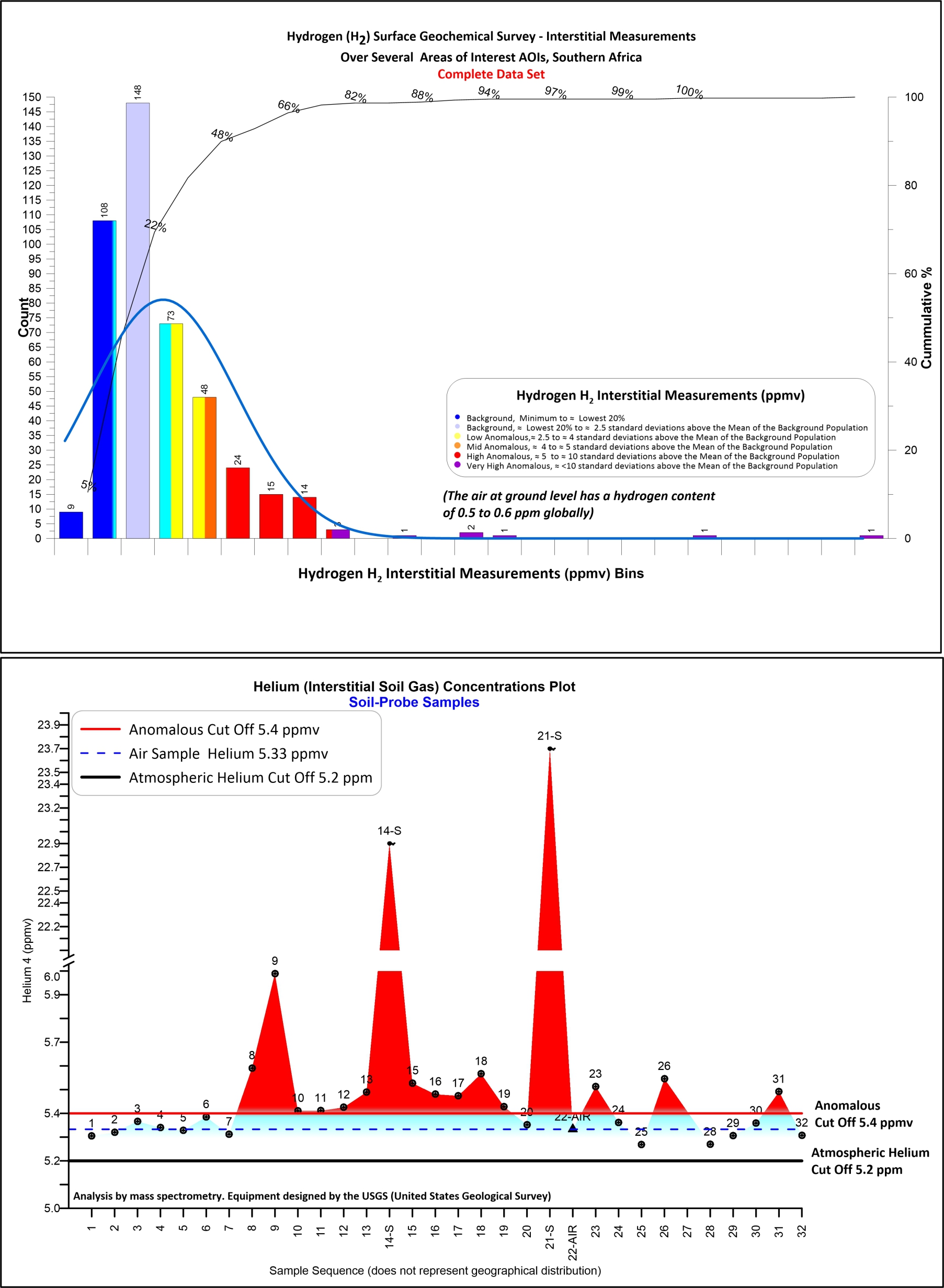
Defining Microseepage
The search for chemically identifiable surface Hydrogen, Helium, Radon (Rn) and Mercury (Hg) and other gases associated to geothermal sources has opened the pathway to additional fields of geochemical exploration, where we can apply surface geochemistry existing and new sampling techniques and tools.
Microseepage was originally identified in the Oil / Gas industry as Predominately VERTICAL seepage of Hydrocarbons where migration is buoyancy-driven, reflecting dynamic reservoir pressures, consequently It is often assumed that only light to heavy hydrocarbon gases and liquids migrate to the shallow surface sediments producing detectible surface geochemical expressions. If hydrocarbon molecules can microseep upward through the stratigraphic column, then other gases and fluids in disequilibrium also can move upward. The microfracture system thought the stratigraphic column cannot selectively only permit hydrocarbons to migrate upward but this system acts as the migration pathway for whatever can and does pass through.
Pogorski, L. A. and G. S. Quirt (1981). Helium emanometry in exploring for hydrocarbons: Part I, in Unconventional Methods in Exploration for Petroleum and Natural Gas, Southern Methodist University, Dallas, TX, pp. 124–135.
Sampling Techniques
Interstitial Soil Gas (“Soil Probe”)
Interstitial gases or “soil gases” are gases and vapors that are present in the intergranular spaces of the subsoil. The Interstitial Soil Gas (“Soil Probe”) method is Qualitative and Quantitative and widely used to sample microseeping gases such Helium, Hydrogen soil gas light hydrocarbon gases (C1 through C4+) and soil vapor pollutans.
The method involves driving a +/- 1.25 cm diameter rod into the ground to a depth of about one meter. A gas sample is removed from the hollow probe via a syringe and injected into an evacuated gas-tight container. Later the sample is removed from the container and injected into a Gas Chromatograph or Mass Spectrometer and analyzed.
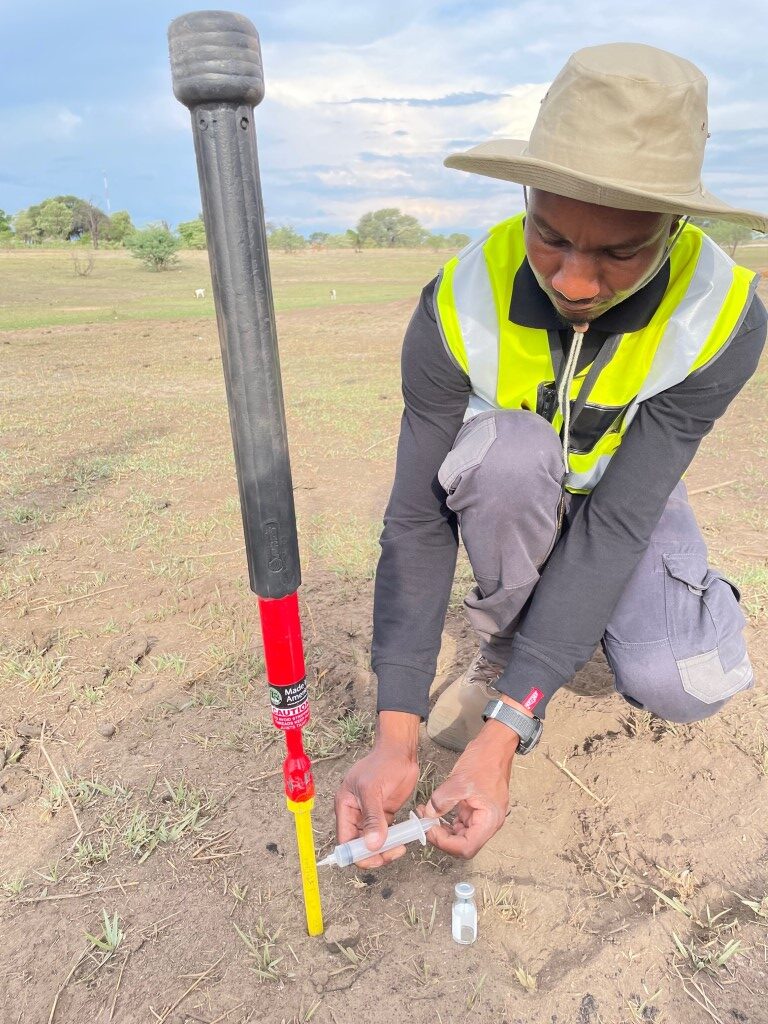
Interstitial Soil Gases concentrations can be affected by significant changes in meteorological variables (barometric pressure, recent heavy rains) and soil parameters such as soil mineralogy, porosity and permeability, shallow water table, etc.
Another classic sampling approach for spot Interstitial gases or “soil gases” is to drill the soil and couple a portable gas analyzer (like the BIOGAS5000 analyzer for H2) to measure the targeted gases at a depth between 80 and 100 cm.
Hydrogen in Soils
The air at ground level has a hydrogen content of 0.5 to 0.6 ppmv globally, higher concentrations of Hydrogen in shallow soils sediments are considered anomalous and of exploration potential.
Hydrogen Analysis of Interstitial Soil Gas (“Soil Probe”)
Hydrogen is analyzed on a specialized gas chromatograph using a reducing gas detector. The GC is required to separate H2 from CO (carbon monoxide) which also gives a signal to the detector, the detector reduces HgO (mercuric oxide) to Hg (mercury) vapor which is measured by a UV photometer. Argon typically is used as the carrier gas. This detector is about 10X more sensitive than hot wire detectors (TCD) commonly used, it can see from below H2 atmospheric air signal of 0.5 ppmv, TCD detectors are typically limited to about 10ppmv.
Helium in Soils
Helium surveys were introduced in the 80’s by the United States Geological Survey (USGS). Helium is a chemically inert, physically stable, and highly mobile gas. It is a radioactive decay product of U-238, U-235, and Th-232. It is not uniquely associated with petroleum, but it can be found in natural gas accumulations in varying concentrations. Helium normal content of the Earth’s lower atmosphere is 5.239 ± 0.004 ppmv.
The continuing decline in global helium reserves coupled with an ever-increasing demand for helium due to its growing number of industrial uses, has sparked renewed interest in helium exploration worldwide.
For this example, from Southern Africa, thirty-two Interstitial Soil Gas samples we collected with Soil Probes and the analyses were done by mass spectrometry; the equipment was designed by the USGS.
The Helium Concentration Maps (Figure-1) and Helium Concentration Plot (Figure-2) below show one of E&P GeoFS recent surveys to determine Helium in soil gas.
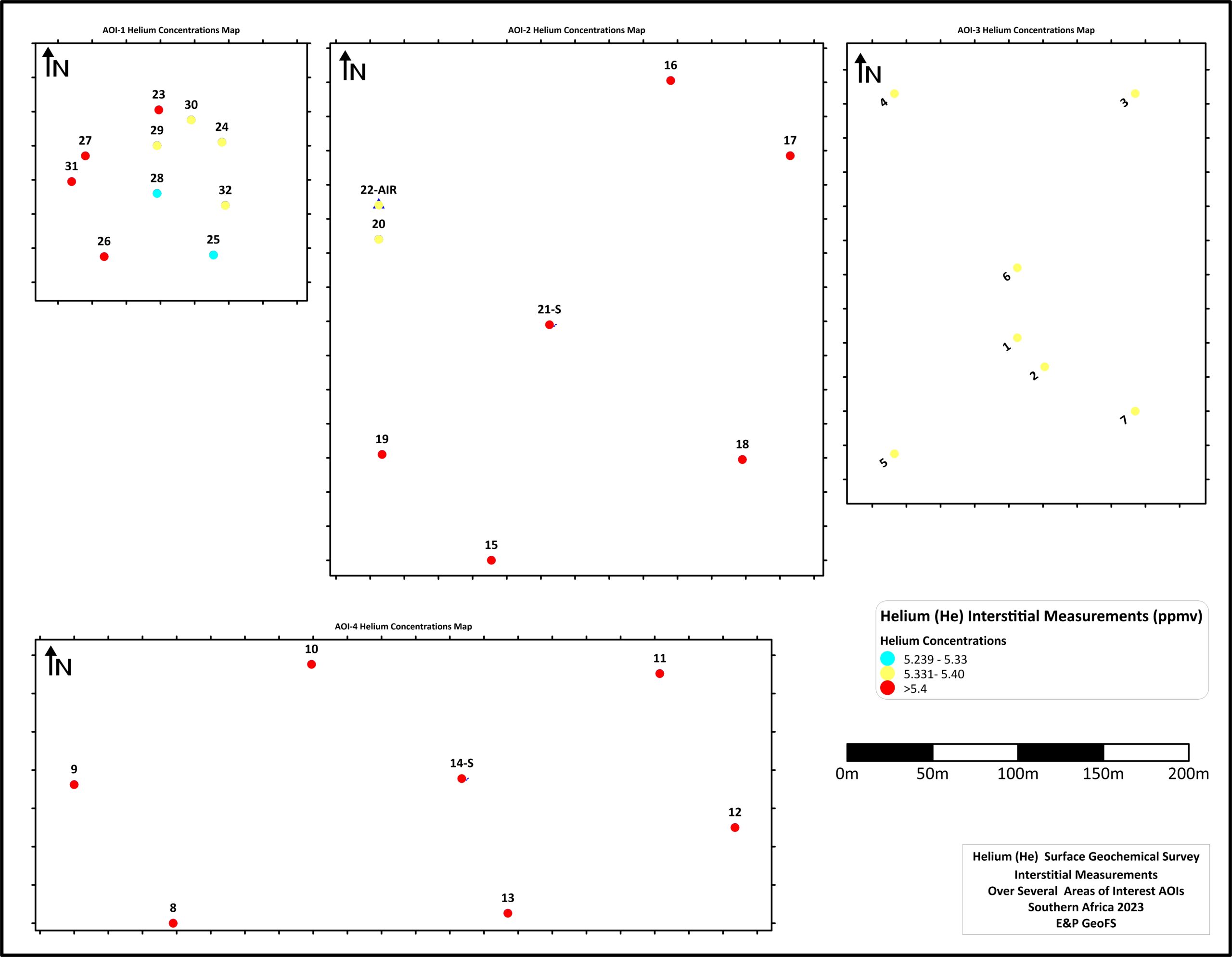
Figure-1 Helium Concentration Maps
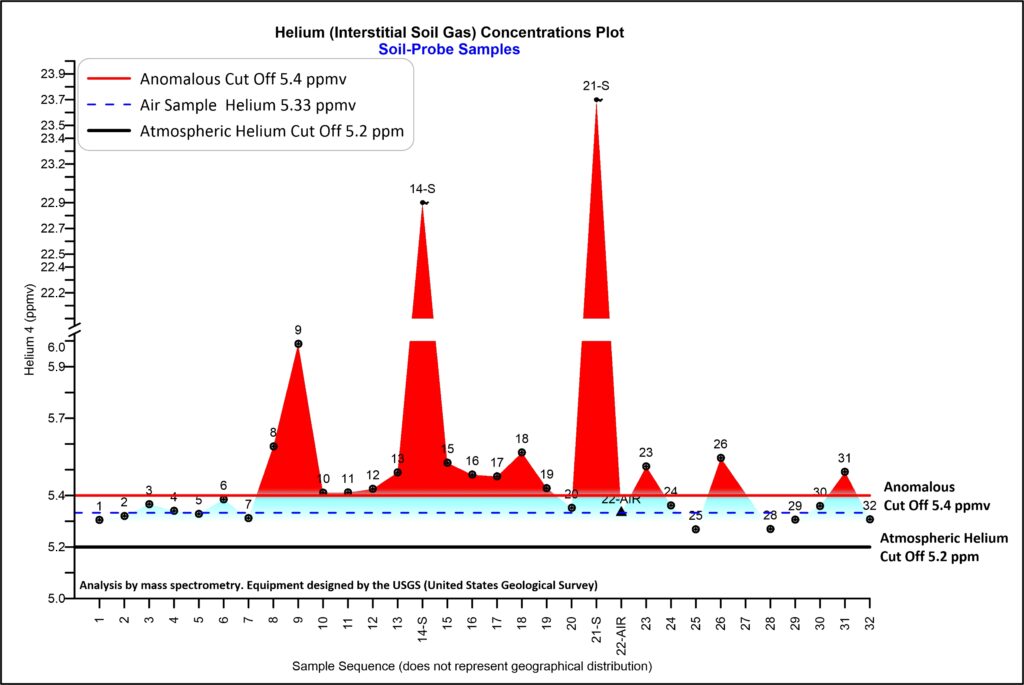
Figure-2 Helium Concentration Plot
The preliminary data tell us the following:
- Helium concentrations range from 5.27 to 23.7 ppmv in the interstitial gas samples.
- In the survey area the Reference Atmospheric Sample (22-Air) has a Helium concentration of 5.33 ppmv. The measured Helium concentrations above 5.33 ppmv are indicative of a Helium source in the subsurface.
- Helium normal content of the Earth’s lower atmosphere is 5.239 ± 0.004 ppmv.
- Concentrations at all 32 sites are above global atmospheric levels of 5.24 ppmv.
- Helium concentrations above 5.4 ppm in atmosphere and soil gas samples are likely to have been enriched from an underground source.
- Seventeen sites exceed 5.40 ppmv – Anomalous Cut Off -As a basic interpretation guideline for this results Helium concentrations larger than 5.4 ppmv indicate enriched concentrations very likely due to microseepage from a Helium source / accumulation in the subsurface.
- Samples 14-S (22.90 ppmv) and 21-S (23.70 ppmv) are associated to Faults, high Helium values could be related to leakage along faults.
- Since Helium, which is very mobile, rapidly transports out of shallow soil into the atmosphere without a subsurface source of Helium continually resupplying lost Helium the continuous transpiration of Helium would deplete it in shallow soil.
- Background and Anomalous values are clearly differentiated.
